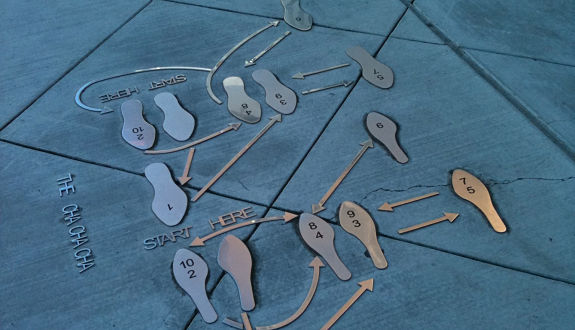Upon Closer Inspection: The 2012 December LSAT
- by
- Jan 05, 2013
- Analysis of Previous LSATs, LSAT
- Reviewed by: Matt Riley


If you took the 2012 December LSAT, you should have received your LSAT score after a long and painful holiday waiting period. For me, those few weeks consisted of ample beer, lots of movies, and very little work. I can only hope some of you fared so well.
So, what about the December LSAT itself? I seem to remember walking out of the LSAT testing center thinking that it had been a fairly straightforward LSAT. In general, I thought Reading Comprehension was easy, Logic Games were moderate, and Logical Reasoning was tricky. Friends of mine who took the December LSAT more or less agreed with me.
Let’s take a closer look at what really went down:
My first section on the 2012 December LSAT was Reading Comprehension. I thought the first passage on Mexican corridos (that’s a 19th century ballad, folks) was a breeze, with the exception of the last question on the author’s viewpoint. Next came a lovely biology passage on the coevolution of plants and insects. Fascinating material. I actually thought this was the hardest passage of this section, mostly due to two tough inference questions. It took me at least two minutes to find the correct answer to question #13, an inference for which there was almost no supporting evidence. Fortunately, I got out unscathed.
The third passage of this section was the memorable pin factory and invisible hand passage. This passage may have been tough for students completely unfamiliar with economics, as it brings up ideas about markets, returns to scale, and monopoly. Of course, you never need to know about these things to do well on Reading Comprehension, but familiarity makes you a more confident reader. All in all, I thought this passage wasn’t too bad, though the last question (a weaken) was a bit tough.
Finally, we had the bizarre comparative reading passage on discretionary nonenforcement of laws (passage A) and late water bills (passage B). This wasn’t horribly difficult, but it was quite weird. This was the first time I’ve ever seen a comparative reading (and I’ve seen them all) in which the two passages had nothing to do with each other, in terms of content. The questions required you to apply ideas from one passage to the other, and that didn’t turn out so bad. Still, the widely divergent content may have thrown some students off.
My next three sections were all Logical Reasoning (one of them an experimental). Of the two scored sections, I thought one was fairly easy, and the other very difficult. The first section (the easier one) continued one recent LSAT trend of having a few (2) Principle Strengthen questions. These are very good candidates for anticipating the correct answer, so for those of you who plan to take the LSAT again, study up — you can expect to see more of these in the future. The only weird thing about this section was that there were two or three Crux questions (i.e., “Which one of the following would be most useful in evaluating the argument?”). Fortunately, these weren’t too hard. The one question I thought was quite difficult was the parallel flaw question at the end, about squirrels stealing food from bird feeders. Savages.
The next Logical Reasoning section was, in my opinion, very difficult. There may have been one or two questions early on that threw off a few students, but things started to get weird for me around question #12 (dried parsley). The stimulus was so short, and the answer choices appeared so difficult, that I was certain this section had to be experimental. Fortunately, I gave it my best, and this section turned out to be the real deal, dried parsley and all.
Another tough question in this section was a Sufficient Assumption question (these are also becoming more common, so any serious LSAT student should devote lots of time to them) about the lovable old Ellsworth. This guy is bursting with self-righteousness (LSAC’s words, not mine), and loves touting the greed of his generation. Turns out he did some bad things, and people aren’t at all surprised. The question asks us why they aren’t surprised. Say what?
Three questions later, we had a doozy about an iconoclastic geophysicist (again, LSAC’s words), and then only a few questions after that, a tough describe question with a flawed stimulus. In question #20, LSAC made a shout out to our very own Matt Riley (why do you hate the university president so much, Professor Riley?), followed by a long and painful parallel question. The last three questions in this section weren’t so bad, though the parallel flaw (do fish have dog fur?) made life suck for a few minutes. Personally, I finished this section right on time, and was lucky to miss only two questions.
At long last, we come to the Logic Games. This section was actually pretty standard, but the third and fourth games were hard. The first game was a quick and easy one-to-one ordering game. We didn’t have very many rules, but the timing subsets (morning, afternoon, evening) made things simple enough.
The second game was a combination game (involving both grouping and ordering principles), and was also pretty easy. The rules were open-ended, leaving lots of different scenarios, but the questions made this game more or less a cinch.
The third game, on the other hand, was very difficult. This game required us to determine the length of service request response times for three different companies, for both their voicemails and their websites. What made this game so tricky was that each rule required us to use greater than or less than signs, something we don’t do very often on logic games on the LSAT. If you represented these rules properly, you were probably in OK shape, but this was no easy feat. Knowing when to use a simple greater/less than, rather than a greater/less than or equal to, was paramount.
Once you had the rules represented, the next step was to use options (e.g., “1/2”) in your setup to demonstrate which slots could have which lengths of time. Even if you did all of this correctly, however, the questions were still pretty tough. This game was a major time suck for many students.
That the third game was so hard made this a devastating section for many students, as they were left with insufficient time to tackle the fourth (also tough) game. Here we had our second ordering game of the section, but this one was much harder than the first. Making a tiered setup was critical to account for the different types of articles to be lined up, but even with a good setup, this game was pretty nasty. Since the rules and deductions didn’t give us all that many restrictions, we were forced to do lots and lots of hypotheticals (question-specific scenarios). All in all, this was a moderate section overall, but the third and fourth questions coming back-to-back made timing a real issue. I would strongly encourage LSAT students to take this section timed, rather than use the individual games as practice.
There you have it: the 2012 December LSAT. Hopefully many of you reached your goal, and your LSAT score will help you get into some law schools this cycle. Fortunately, LSAC graced us with a generous LSAT curve (-12 for a 170, -27 for a 160), which may have given some of you a little boost.
So, what did you think about the December LSAT, and how do you feel now that you have your LSAT score? Share your thoughts and experiences in the comments below.
Search the Blog

Free LSAT Practice Account
Sign up for a free Blueprint LSAT account and get access to a free trial of the Self-Paced Course and a free practice LSAT with a detailed score report, mind-blowing analytics, and explanatory videos.
Learn More
Popular Posts
-
logic games Game Over: LSAC Says Farewell to Logic Games
-
General LSAT Advice How to Get a 180 on the LSAT
-
Entertainment Revisiting Elle's LSAT Journey from Legally Blonde








